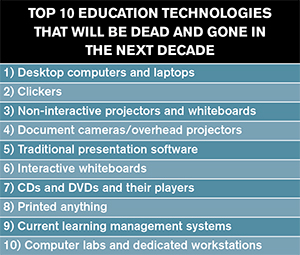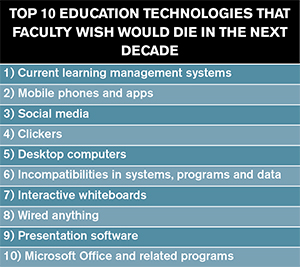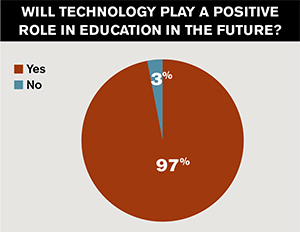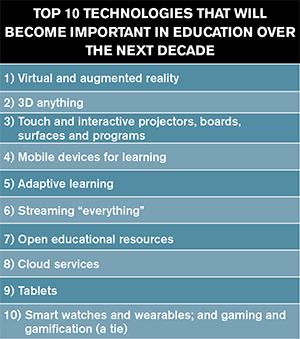Archive of ‘Bring Your Own Device BYOD’ category
Instagram positioned itself as the
third most popular social media app and the best social media app of 2016.
Twitter saw a decrease in users over the past year and even death of their beloved 6-second video-clip sharing app, Vine.
In an article entitled ‘Why Vine Died,’ Casey Newman reported the following, “Former executives say that a major competitive challenged emerged in the form of Instagram, which introduced 15-second video clips in June 2013.
Instagram remained stable with the introduction of new features like stories and video channels, resources of it’s parent company, Facebook, and the introduction of ads to the platform that look very similar to the posts in a user’s feed.
In addition to a total logo redesign, Instagram shifted its focus from just pictures, to longer video (from 15 sec. to one minute) and direct messaging features, such as group posts and disappearing video. Explore Channels in Discover let people discover new photo and video content based on interests. Instagram Stories added a new element to the Instagram experience showing highlights from friends, celebrities and businesses one follows without interfering with their feed. Instagram also caters to business needs through its Instagram for Business platform that allows for instant contact, detailed analytics and easy-to-follow linked content.
Most recently, Instagram released live video in their stories feature. Users can start a live stream in their Instagram story and view comments and feedback from their viewers in real time! This feature is similar to apps like musical.ly and live.ly which has over 80 million users and 62% of its users are under 21.
#StudentVoices #MillennialMondays #WhatToWatch
#MillennialMondays is a new series that aims to discuss relevant topics on careers and business from a millennial perspective.
+++++++++++++++++++++++++
more on instagram in this IMS blog
https://blog.stcloudstate.edu/ims?s=instagram
Chronas – Interactive Historical Map and Data Sets
http://www.freetech4teachers.com/2015/12/chronas-interactive-history-map-and.html
http://chronas.org/history
My note: it is not about history ONLY, it is about gamifying your lesson plan.
+++++++++++++++++++++++
more on history in this IMS blog
https://blog.stcloudstate.edu/ims?s=history
more on digital storytelling in this IMS blog:
https://blog.stcloudstate.edu/ims?s=digital+storytelling
more on gamification in this IMS blog
https://blog.stcloudstate.edu/ims?s=gamification
#FakeNews
View post on imgur.com
++++++++++++++++++++++
Report: Digital Natives ‘Easily Duped’ by Information Online
By Sri Ravipati 12/07/16
https://campustechnology.com/articles/2016/12/07/report-digital-natives-easily-duped-by-information-online.aspx
Researchers at the Stanford Graduate School of Education assessed middle, high school and college students on the their civic online reasoning skills, or “the ability to judge the credibility of information that floods young people’s smartphones, tablets and computers.”
The Stanford History Education Group recently released a report that analyzes 7,804 responses collected from students across 12 states and varying economic lines, including well-resourced, under-resourced and inner-city schools.
when it comes to evaluating information that flows on social media channels like Facebook and Twitter, students “are easily duped” and have trouble discerning advertisements from news articles.
Many people assume that today’s students – growing up as “digital natives” – are intuitively perceptive online. The Stanford researchers found the opposite to be true and urge teachers to create curricula focused on developing students’ civil reasoning skills. They plan to produce “a series of high-quality web videos to showcase the depth of the problem” that will “demonstrate the link between digital literacy and citizenship,” according to the report.
The report, “Evaluating Information: The Cornerstone of Civic Online Reasoning,” can be found here.
+++++++++++++++++++++++
more on information literacy in this IMS blog:
https://blog.stcloudstate.edu/ims?s=information+literacy
Tap into These 5 Tips for Mobile Learning
A master in mobile learning shares his best advice for rebooting your instruction.
By Dian Schaffhauser 12/13/16
https://campustechnology.com/articles/2016/12/13/tap-into-these-5-tips-for-mobile-learning.aspx
1) Find Out What Devices Are Really in Use
instructors have to take device choices into consideration when they’re choosing apps
2) Teach Not Just for Consumption but for Curation
Students use their phones to capture video or audio interviews and post them to Twitter’s live streaming service, Periscope, at various times throughout the course.
3) Try Texting for Exam Review
As an alternative, he began texting review questions every few hours for the next exam and found that he was getting a “much higher frequency of interaction.” Teacher Text, as he called it, never supplied the answers, just questions — sometimes multiple choice and other times open-ended. To keep students’ interest, he’d use at least a few of those questions on the actual test. “They’re going to be more inclined to pay attention to every question because I may give them 50 questions of review and have four or five of those on the test,” he said.
The result: “Grades started to climb pretty quickly.”
4) Perform Safe Texting, but Try It Everywhere
adopted remind from iKeepSafe, a free service that provides an interface between the teacher and the students for the purposes of texting. The tool has simplified the process of instructor texting, a practice that has overall helped students “to feel more connected.”
5) Fit Your Mobile Approach to Your Subject
[flashcard apps] like Quizlet and StudyBlue that can replicate the ongoing study or rehearsal of learning
might stream a quick lesson on the fly through Periscope or hold a 15-minute class discussion through a chat on Twitter.
“I’ll just say, ‘Here’s my hashtag, and I’m going to be live here at 9 to 9:15 p.m. Central time,'” he explained. He typically intends to broadcast a question about every five minutes and allow people to respond. “It’s interesting. You shoot out one question and you get bombarded. People are putting resources in there. In 15 minutes, I’ve barely gotten two questions off. But they have the hashtag and they can go back and harvest the resources that other people put up.”
6) Channel Your Students
Speak the language your learners listen in.’
+++++++++++++++++++
more on mobile learning in this IMS blog:
https://blog.stcloudstate.edu/ims?s=mobile+learning
more on curation in this blog:
https://blog.stcloudstate.edu/ims?s=curation
Top 10 Education Technologies that Will Be Dead and Gone in the Next Decade
In our 2016 Teaching with Technology survey, faculty members offered their predictions on what the future holds for technology in teaching — including what hardware and systems will bite the dust over the next 10 years.
By Dian Schaffhauser, Rhea Kelly 11/02/16
https://campustechnology.com/articles/2016/11/02/top-10-education-technologies-that-will-be-dead-and-gone-in-the-next-decade.aspx




++++++++++++++++++++++++++++++
more on tech trends in education in this IMS blog
https://blog.stcloudstate.edu/ims?s=tech+trends
VR, AR, and the Internet of Things: Life Beyond Second Life
https://campustechnology.com/Articles/2016/12/06/Life-Beyond-Second-Life-VR-AR-IoT.aspx
But it gets even more interesting when virtual and augmented reality meet the Internet of Things
when Second Life began, there was a lot of interest, but the toolset was limited — just because of the timeframe, not that the toolset wasn’t a good one for that period. But, things matured. I think it was, in particular, the ability to work in HD that improved things a lot. Then came the ability to bring in datasets — creating dashboards and ways for people to access other data that they could bring into the virtual reality experiment. I think those two things were real forces for change.
A dashboard could pop up, and you could select among several tools, and you could get a feed from somewhere on the Internet — maybe a video or a presentation. And you can use these things as you move through this hyper reality: The datasets you select can be manipulated and be part of the entire experience.
So, the hyper reality experience became deeper, richer with tools and data via the IoT; and with HD it became more real.
We can’t deny the fact that curriculum and the way we teach is becoming unbundled. Some things are going to happen online and in the virtual space, and other things will happen in the classroom. And the expense of education is going to drive how we operate. Virtual reality tools, augmented reality tools, and visualization tools can offer experiences that can be mass-produced and sent out to lots of students, machine to machine, at a lower cost. Virtual field trips and other kinds of virtual learning experiences will become much more commonplace in the next 5 years.
Report: Flipped and Mobile Helping to Drive Growing Momentum in E-Learning Content and Courses
By Leila Meyer 11/28/16
https://thejournal.com/articles/2016/11/28/report-flipped-and-mobile-helping-to-drive-growing-momentum-in-elearning-content-and-courses.aspx
According to the report, one of the main reasons for the growth in generic e-learning content and courses is the adoption of teaching and learning methods such as the flipped classroom, blended learning and virtual classrooms
The report identifies the proliferation of mobile devices on campus as the third factor helping to drive adoption of these courses. “The availability of gadgets such as e-book readers, tablets, and laptops, coupled with better and uninterrupted Internet connectivity, has led to a greater penetration of digital classrooms and e-learning products,”
++++++++++++++++
more on elearning in this IMS blog:
https://blog.stcloudstate.edu/ims?s=elearning
Students Develop VR Campus Tour of Lehigh U
By Sri Ravipati 11/28/16
https://campustechnology.com/articles/2016/11/28/students-develop-vr-campus-tour-of-lehigh-u.aspx#
To view the VR campus tour, visit the Vertra site.
“The app arose from a group project for an entrepreneurship class taught by professors Joshua Ehrig and James Peterson,” according to a report from The Brown and White,
++++++++++++++++++
more on VR in this IMS blog:
https://blog.stcloudstate.edu/ims?s=virtual+reality
Study Examines Benefits and Constraints of BYOD Policies
By Richard Chang 11/18/16
https://campustechnology.com/articles/2016/11/18/study-examines-benefits-and-constraints-of-byod-policies.aspx
January 2017 edition of the journal “The Internet and Higher Education,” looked at 17 teachers and their approaches to implementing BYOD policies in their classrooms.
Despite the constraints, most people surveyed agreed that today’s instructors should encourage devices to become part of the classroom, as the perceived benefits and resources exceed the textbooks currently used. At the same time, full implementation might require an entire overhaul of the classroom environment as we know it.
(how about gamification of the teaching process (http://web.stcloudstate.edu/pmiltenoff/bi/), as it was proposed numerous times and rejected by the librarians?)
The authors of the study are Yanjie Song and Siu Cheung Kong from the Department of Mathematics and Information Technology at the Education University of Hong Kong. The complete report is available for a fee on this site.
!!!!!!!!!!!!!!!!!!!!!!!!!!!!!!!!!!!!!!!!!!!!!!!!!!!!! ! !
Considering this recent statistics
technology use among teachers
and this summer LITA listserv exchange:
BYOD in the library
I am wondering why the recent remodeling of Miller Center 218 remained stuck in the “laptop” model after it was proposed numerous times to consider the BYOD model:
https://blog.stcloudstate.edu/ims/2015/09/25/mc218-remodel/
+++++++++++++++++
more on BYOD in education in this IMS blog:
https://blog.stcloudstate.edu/ims?s=byod
Technology Use Among Teachers Strong and Growing
By David Nagel 11/17/16
https://thejournal.com/articles/2016/11/17/technology-use-among-teachers-strong-and-growing.aspx
The study, conducted by adaptive learning provider Front Row Education, found that 75 percent of teachers use technology with students on a daily basis and that a bit more than half have a 1-to-1 ratio of devices to students in their classrooms (up 10 points from last year’s survey). That increase in student devices is helping to drive an increase in the use of technology, with about 60 percent of teachers surveyed saying they expect to increase the use of technology in the 2016–2017 school year.
60 percent of teachers have access to Chromebooks, up 15 percent from last year; 64 percent have access to iPads, down 5 percent from last year. iPads tend to be the tool of choice in lower grades (75 percent in K–2), while Chromebooks dominate the middle school years (66 percent). Interestingly,
+++++++++++++++
more on technology use among teachers in this IMS blog:
https://blog.stcloudstate.edu/ims?s=technology+teachers



